Hospital TV Packages Explained: Everything You Need to Know About Hospedia Bedside Units
14 minute read | 13/05/2022
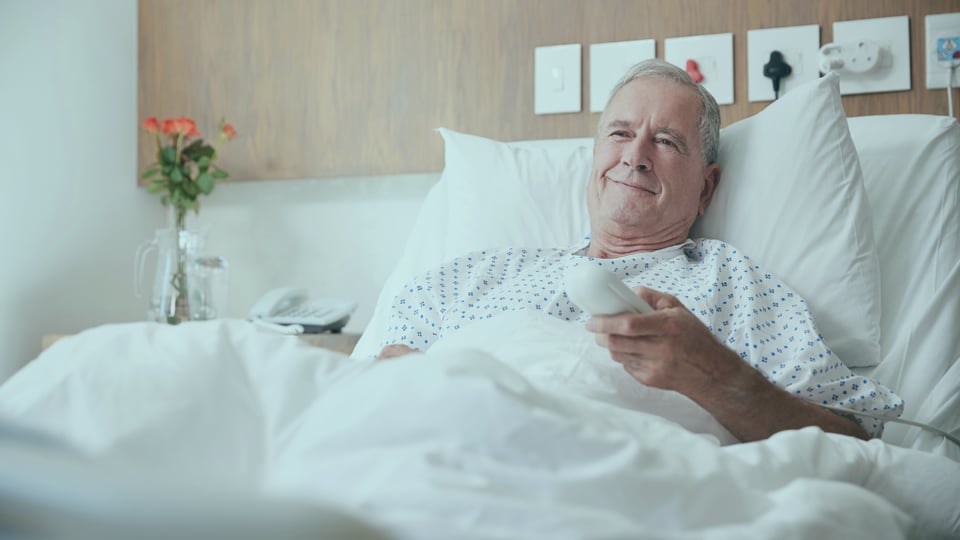
Visiting hospitals can be a stressful experience for patients and their families, making it important to consider how hospitals can provide end-to-end support that includes a focus on entertainment during downtime. One of the ways to do this is by implementing a patient entertainment platform.
At SPARK TSL, we have acquired over 50 thousand Bedside Units (previously Hospedia) that provide free morning TV, 24 hour radio, telephony and hospital information. There are also entertainment packages available to purchase including TV outside of the free time, movies, sports & more.
We’ve also built a comprehensive Bring-Your-Own-Device patient engagement platform called SPARK Media®. This offers everything to patients, from free entertainment to NHS resources and charity information.
In this article, we look at the benefits of free hospital TV and what free entertainment is available on the Bedside Units. You will also learn about the different entertainment packages that are available to purchase on the Bedside Units, including the pricing. SPARK TSL has a vision to transform the future of patient experience by making hospital TV packages free. Learn more about how we will achieve this.
What are the benefits of hospital TV?
Spending time in hospital can be a lonely experience. Patients have no choice but to spend much of their time in their hospital beds. Many can feel isolated, leading to a 29% increased mortality risk — especially in older patients.
Hospital TV is one of the most effective solutions to help patients overcome this feeling of isolation or loneliness. Access to the latest award-winning series or a classical film offers a great distraction for someone waiting for surgery or the next consultation with their doctor.
It's also a way to stay in touch with the outside world. Hospital TV allows patients to watch the news or the latest sporting event. By keeping up with life outside the hospital walls, patients can be given a real morale boost and feel optimistic about leaving the hospital.
On top of live channels and on-demand shows, patients can access educational content suited to their specific health concerns. This content can also be used by doctors and nurses when giving information and advice to patients. It’s often easier to explain a condition or treatment if there’s educational content on hand to assist them.
It can be hard to receive feedback from a patient during their stay in hospital and they’re unlikely to provide any after they’ve left. This means hospitals, both private and the NHS, are missing out on valuable opinions and data that can shape hospital decisions and improve services.
The Hospital Bedside Units can also host surveys, providing patients with feedback features which organisations can use to improve their services and meet the demands of future patients. Ultimately, all of the benefits above contribute to a better patient experience.
We've discussed more about the future of patient experience and how entertainment and education provided by TV systems can contribute to painting a more positive picture. The next advancement from the legacy Bedside Units previously owned by Hospedia, is SPARK TSL’s latest product in collaboration with Sentean, SPARK Fusion®.
A brief history of Hospedia
Before we look into the features, it’s worth knowing the history of these Bedside Units. Over 20 years ago, Patientline invested £150,000,000 worth of infrastructure for the NHS. This equated to the installation of 56,500 bedside units across 160 hospitals. This was an investment that was given to the NHS which was subsequently funded by the patients paying for entertainment. This model carried on when Hospedia acquired Patientline in 2008 and is still running after WiFi SPARK acquired Hospedia in 2021. This is because The cost of TV goes towards the maintenance of the units which covers 24/7/365 support, health and safety checks, replacement of parts and the engineers that repair the units.
Hospital Bedside Units: What can they do?
There are two main technologies. The T2 remote control Bedside Units & the T3 Touch Screen Bedside Units. The latter technology has less features available compared to the T3’s. The negative image of these Bedside Units is well known because of the price around watching TV. However, there are more positive features to these Bedside Units that most people are unaware of. To learn more about what's available on the Bedside Units, read this blog.
Positives of Hospedia: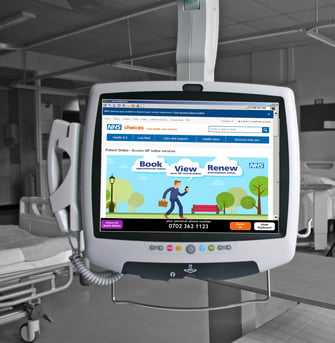
- Has free TV all morning and free Radio all the time.
- There are other entertainment options available.
- When first installed, there was no cost to the Trusts saving hundreds of millions of pounds to the NHS.
- Links to NHS resources can be uploaded onto the units. This includes links to NHS videos as the units have access to the internet.
- Specialised videos can be uploaded and there’s currently a patient safety video available to watch.
- Surveys can be uploaded for Trusts to ask patients questions.
- Patients can call family and friends free of charge from the bedside phone (there are some duration limitations)
- Images can be uploaded such as the food menu.
- A dementia orientation screen can be added.
Negatives of Hospedia:
- Patients have to pay for the extra entertainment options (view prices).
- The units can be broken for long periods of time because it’s hard to get hold of certain parts due to their age.
- The screen quality is not as good as the modern standard (because they’re 20 years old).
- It’s a slow process to upload anything to the units and they aren’t very adaptable.
- Inbound calls come with a price for the caller.
- Patients don’t know enough about the units to make the most out of them.
- Many patients find them hard to use.
For more information, read our blog about 'What's Available on Hospedia Bedside Units'.
In the meantime, we encourage Trusts to educate their staff, and therefore their patients, on what the current Bedside Units can do, to ensure patients get the most out of the available services. When the new SPARK Fusion® iPads are installed, staff and patients will be more familiar with the ‘bedside entertainment and engagement’ concept and will be able to use the units to their full potential.
What TV packages are available?
There are several entertainment packages available depending on the technology. Before purchasing, it’s important to know about the following free entertainment options.
Free TV: 6am to 12pm for Adults and 7am to 9pm for Children.
Free Hospital Radio: 24/7 and includes the local Hospital Radio.
|
Entertainment Package |
1 Day |
2 Day |
3 Day |
5 Day |
7 Day |
14 Day |
30 Day |
|
TV all channels |
|||||||
|
TV, Movies, Audio Books, Box Sets |
|||||||
|
Audio Books |
|||||||
|
Sky Sports Add On |
|||||||
|
TV & BT Sports |
|||||||
|
Sky Sports Football |
- Available to purchase on bedside units and call centre.
- Only available through call centre.
Find out the prices for these packages. Simply type in the name of the Hospital you wish to see the prices for. It will display the prices according to the type of technology at the Hospital. Not all of these features are available on both technologies. Learn more about what's available on the Bedside Units.
How we're making hospital TV packages in the UK free
Back in November 2021, we acquired Hospedia because we had a vision. Instead of asking patients to pay high charges for certain entertainment services and inbound calls, we are appealing to Trust and Charities to fund the service. The current high price is due to a lack of utilisation. The more patients that use the Bedside Units, the lower the price can be while still being able to maintain the service. This is why when Trusts fund the cost of TV, it equates to as little as £1 per bed per day. We would love to remove the patient pays model overnight, but if we did this with no alternative funding, hundreds of thousand of patients wouldn't have access to basic entertainment such as TV.
There are more SPARK TSL solutions to removing this outdated patient pays model.
- SPARK Media® Bring Your Own Device: This patient entertainment and engagement platform is available on patient and visitors own device. It provides easy access links to entertainment such as sudoku, live TV and the hospital radio.
SPARK Media® has always been free for end users.
- SPARK Fusion®: The future of Bedside Units is here, thanks to the acquisition of Sentean in 2024. These modern bedside units will be in the form of iPads. The model is based off providing a complete patient engagement platform to improve the patient experience and provide tangible ROI through it’s ability to host apps, such as e-prescribing, meal ordering, translation services and more. Again, everything is free for the end user and the cost is covered by Trusts and their charities. Patient entertainment is an investment to improve the patient experience.
Beyond entertainment
Removing the patient pays model is one element of our vision. The other focuses on improving NHS efficiencies to speed up processes, give patients the tools to aid their own recovery and subsequently reduce bed blocking and delayed discharge while providing a return on investment for the Trusts.
The legacy Bedside Units can aid this to a degree based off some of the positive features listed above. However, they are incomparable to the impact SPARK Fusion® can bring with in terms of saving Trusts' money.
As a company, we are passionate about eliminating the patient pays system on legacy Hospedia Bedside Units and saving the NHS time and money through SPARK Fusion®.
Improve patient experience
Boredom is common in hospitals. In fact, 70% of people asked in a survey stated they didn’t have enough to do when they were in hospital. Patients are isolated from their friends and family for long periods without many distractions from their normal routines.
That’s why an entertainment and engagement platform is key to improving the patient experience. Whether you want to speak to us about what features on the Bedside Units can be enabled or discuss SPARK Fusion® in more detail, please contact us today and we'll be glad to help. In the meantime, feel free to download our SPARK Fusion® brochure and find out how you can start improving the experience for staff and patients alike.
About the author
Rebecca O'Donovan
Becky is the Marketing Director at SPARK TSL, of whom she has worked for since 2012. She is responsible for high-level marketing strategy focusing on lead generation and aiding the vision of the business to ensure business growth.
More articles by the author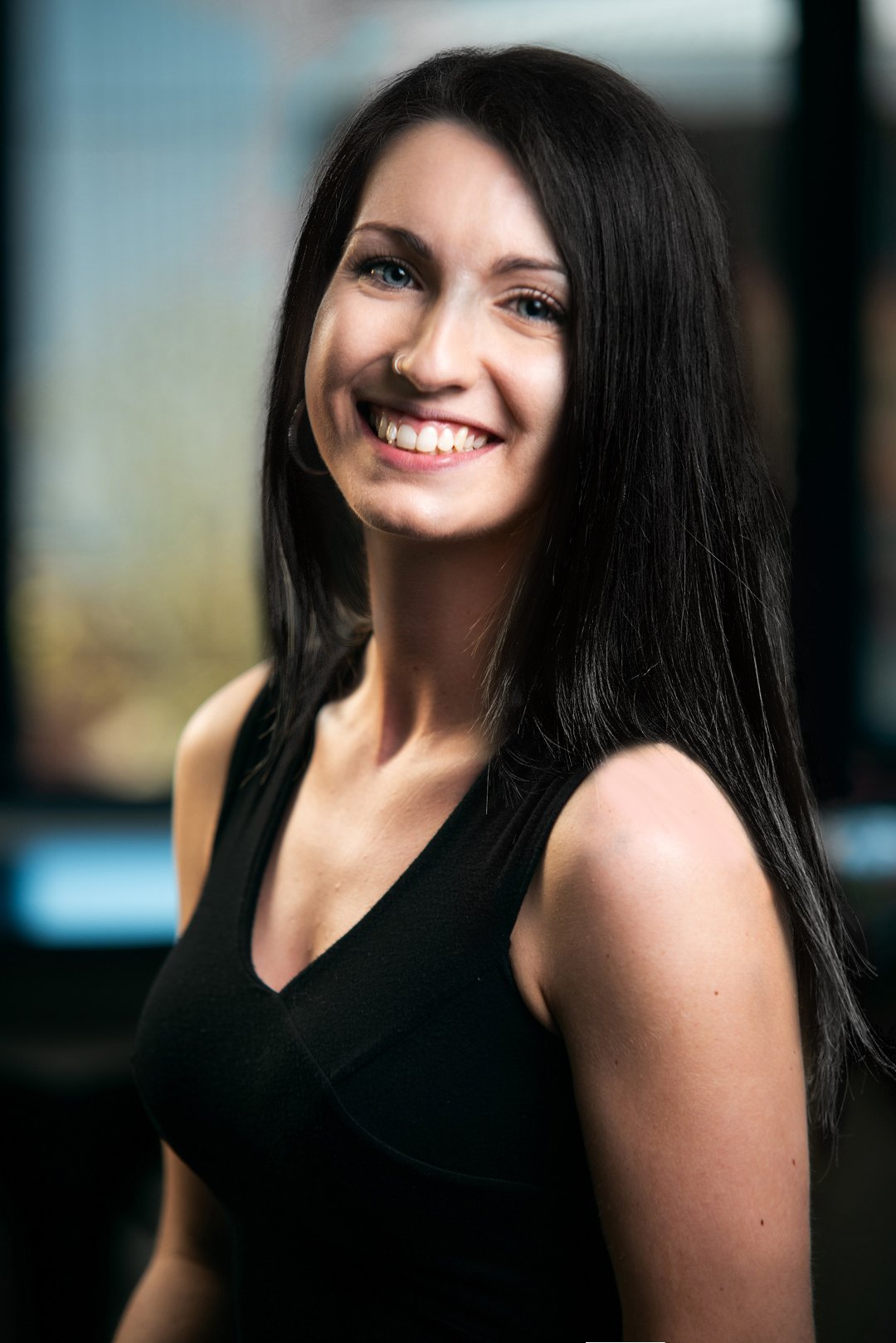
Related articles
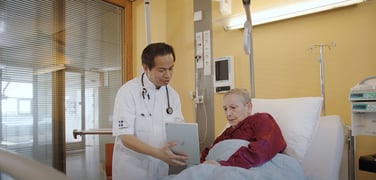 Company News
Company News
Introducing SPARK Fusion, the Hospedia Upgrade
Understanding Hospedia, The Current Bedside Entertainment Solution If you’ve been to hospital, then you’ve ...
 Company News
Company News
SPARK TSL and Sentean are Modernising Hospital Bedside Technology
The initial introduction of Sentean and SPARK TSL The Managing Director of Sentean, Willem-Jan and SPARK ...
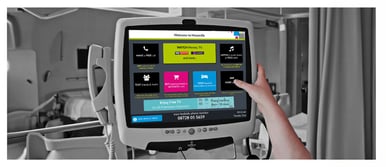 Patient Experience
Patient Experience
What’s Available on Hospedia Bedside Units
Types of Bedside Units There are two main types of technology, the T2 remote control units and the T3 touch ...


